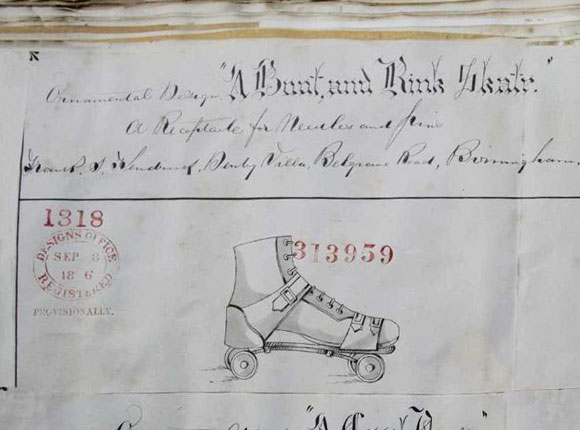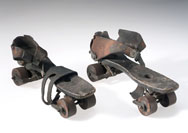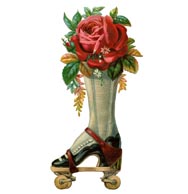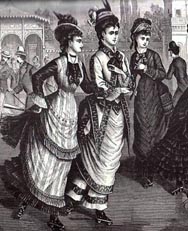Boot and Rink Skate
No example of this needle case has been found to date and it is unknown whether it was actually produced. If you have this needle
case in your possession or know of someone who has it, please contact us so that photographs of it can be obtained
and added to the this website.

Design Representation
Design Details
Needle Case Type: |
Figural |
Patent/Registered to: |
Frank J. Kendrick - Birmingham |
Patent/Design Representation #: |
Ornamental Class 1: Metal: #313959 (Provisional Design #1318 registered September 8, 1876) |
Patent/Design Registration Date: |
September 7, 1877 |
Location of Patent/Design Registration: |
The National Archives (TNA) - Kew, UK |
Reference #:
|
TNA Representation - BT 43/42/313959
TNA Register - BT 44/4/313959 |
Dimensions: |
Unknown |
Material: |
Unknown |
Name Variations: |
Unknown |
Other Variations: |
Unknown |
Facts
According to Encyclopedia Britannica roller-skating is a “recreational and competitive sport in which the participants use special shoes
fitted with small wheels to move about on rinks or paved surfaces.” Most recreational skates, like the antique ones displayed below,
consisted of a frame to which the wheels were attached that clamped onto a person’s shoes.

History
Joseph Merlin, a Belgian inventor, created the first roller skate in 1760 which was basically an ice skate with wheels instead of a
blade. By 1863 skates were redesigned and now contained four wheels, two in the front and two in the heal which made them much more
stable. In the 1870’s skating rinks with wooden floors were built in most towns and cities and skating remained very popular throughout
the 1890’s. Here is a Victorian drawing of a woman's roller skate.

Miscellaneous
There was one significant benefit to roller skating that most people are unaware of. During the Victoria Period women were required
to wear constricting clothing that substantially limited their movement. Because of the popularity of roller skating, women were allowed
to modify their dress which gave them more freedom and lead to changes in their traditional role.









